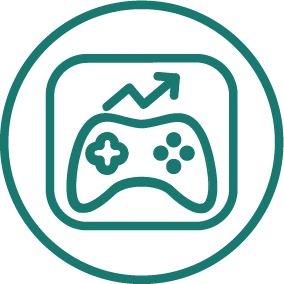APP STORE OPTIMIZATION · HUGH KIMURA · OCTOBER 2013
The iOS Developer's Guide To Apple App Store Categories
How to choose which App Store category your iOS app should be in, if you want better visibility.
Part of App Store Optimization (ASO) and getting your app downloaded more, is putting it in the correct category. Of course, this is not as important as choosing the right keywords, having an eye-catching icon, localizing your app or creating an amazing opening screenshot.
But putting your app in the proper category can provide certain advantages. In this post, we will explore why you should give careful thought to how you categorize your app and give you an easy way to reference all the available App Store Category Definitions.

Sometimes You Have No Choice
For many apps, there is only one obvious primary and secondary category. For other apps, there is some room for debate.
Before we get started, remember that Apple reviews the chosen categories of every app submission to see that they do indeed match what the app does. So if you try to slip your app into another category that it is obviously not suited, for whatever reason, your app will be rejected.
In addition, don't forget to list a secondary category, whenever possible. Of the two, your primary category should be the more accurate description of your app. Having your app in two categories maximizes your app's discoverability.
How To Choose Your Categories If You Do Have An Option
If your app would apply to two (or more) categories equally well, then which one do you choose for your primary category? One way that you could do it is to take a look at our Leaderboard for the categories you are considering. The less competitive category should be easier to rank for and therefore be preferable.
For example, let's say that your app provides the weather report and tide forecasts (among other things) for traveling surfers. Here are the category definitions and examples for two of your category options, from the Apple Developer website:
Travel: Apps that assist the user with any aspect of travel, such as planning, purchasing, or tracking (e.g. flight tracking, multi-time clocks, city guides, hotel/rental car/air fare shopping, vacation planning, public transportation, travel rewards)
Weather: Apps with specific weather-related information (e.g. radar, forecast, storms, tides, severe weather, local weather)
Which category is less competitive?
We can get a quick idea by looking at the apps that are #1 and #50 for those lists. Doing this will not only give us an idea of how the best app in that category is doing, but will also show us the overall strength of the category. In order to get a more detailed look, you will have to go through the rankings more closely.
This is what the Travel category currently looks like on our Leaderboard:
Now let's look at the Weather category. Here is what we find:
As you can see, Weather might be a better category to list your app in because the highest Estimated App Worth (EAW) is $64M vs $337M for Travel. Likewise, at position #50, Weather has an app with an EAW of $1.8M vs $4.4M in Travel.
Of course, this is not a fail-proof method, but it does give you a good idea of which category is less competitive and therefore easier to rank in. Just like with choosing keywords, relevance should take priority over competition metrics. But given similar relevance, referencing our Leaderboard will give you a more accurate indication of which category is less competitive because it takes into account more inputs than the Apple Top Charts.
Note: Since this post was first published, we have deprecated the Estimate App Worth feature in favor of our Store Intelligence product.
The Quick Reference
If you want to see all of the App Store Categories, along with definitions and examples to help you choose the right category for your app, we have posted a GitHub Gist. This list is also available if you login to your Developer Account in iTunes Connect.
But if you are just starting out, or do not want to go through the trouble of logging in, this quick reference will help. You can even download it for offline reference.
Conclusion
If you have the luxury of choosing between several different categories for your primary and secondary categories, check out our Leaderboard to see which categories are equally relevant, but least competitive and use those first. Less competition means that you have a better chance of getting into Apple's Top Charts rankings and our Leaderboard, which is free advertising for your app. Make no mistake, it is tough to get on these charts, but being in the right category can help a lot.
As always, be sure to track and test your ASO changes. That is the only way to tell if your changes are having a positive effect on your downloads.
If you have experience with changing your app category, what were your results? Let us know in the comments below.





